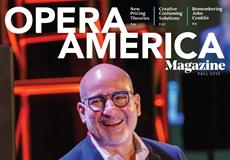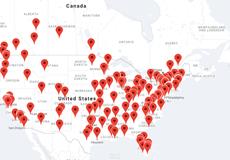Interpreting National Research Through a Local Lens: A Response to Understanding Opera’s New Audiences
The following essay is a response to OPERA America's Understanding Opera’s New Audiences report and how its findings can inform strategy across the field.
At Portland Opera, we are always seeking the best ways to engage new audiences. We were delighted to be one of the 36 companies that participated in the research that underlies OPERA America’s Understanding Opera’s New Audiences report.
The opportunity to explore how buyer motivations across regions and company sizes influence ticket purchases was one that my colleagues and I simply couldn’t pass up. Having a broader perspective informs how we work in our own geographic and social community. By engaging with national research, like Understanding, an opera company can better understand how patron patterns work within its own institution.
My colleagues and I first contended with the findings of OPERA America’s research in the webinar on the Understanding report’s key takeaways. Our internal Teams chat was filled with surprised-eye emojis because our company-specific data often differed from the national picture. We were somewhat off the curve but not surprised by it — after all, we’re “keeping Portland weird”! Our local data didn’t always align with fieldwide trends, but there was still an opportunity to learn. The findings of the research sharpened my understanding of Portland Opera by holding our reality against the broader picture.
I worked with our senior manager of sales and audience development to explore the national findings alongside our company-specific data. As participants in the study, we had our own customized report from the Understanding research, which we paired with data we had collected independently through audience surveys and other means. We first swept through the high-level results and noted where we aligned with the broader group: audiences’ online research habits, patrons as promoters, and price sensitivity.
Then we reflected on the areas where we diverged. For example, the survey found that in cities with multiple opera companies, the largest company tends to uphold inherited repertoire while smaller companies tend toward experimentation. In Portland, it’s the opposite. As the largest company in the city (a so-called “anchor company” to use the report’s terminology), Portland Opera often pushes the boundaries of repertoire, while it’s our small “alternative” companies that frequently uphold the canon.
We also were struck by the national takeaway that new audiences “initially come for a new ‘experience’ and they tend to stick to the classics.” The dialogue seemed to equate “classics” with the Aidas, Bohèmes, and Carmens, but our experience elucidated the real meaning behind this finding. Newcomers stick to “famous or well-known works” (think: name recognition!), and our recent sell-out of The Shining demonstrated that recognizable titles don’t have to be traditional operas at all.
After working through the more straightforward “yep” and “nope” points, our team dug into more quantifiable results to see how they could inform our process. Understanding pushed us to look more closely at the buying patterns of our newcomers at Portland Opera. Like many opera companies in recent years, we’re doing a good job of attracting new audiences for their first visit. Comparing the 2023–2024 and 2024–2025 seasons, we saw a major jump: Two years ago, 58% of single-ticket buyers were new to us, and last year that number rose to 70%.
The question for all of us is what will bring those newcomers back. Ticket pricing is naturally a consideration. The Understanding report offered nuance on the topic: Nationally, newcomers were willing to pay for their first visit and overwhelmingly believed that their experience was worth the price. But they still cited the cost of tickets as a barrier to returning more frequently. Portland Opera has long worked to remove price barriers for families, students, and lower-income audiences, and we take pride in the fact that our audience surveys consistently show that patrons feel their ticket price matches the value of their experience. I hope we’ve alleviated price as a significant barrier for newcomers to return, but we must still be cognizant of whether cost is holding some back from returning more often.
We also looked at our newcomer demographics, as Portland Opera has undergone significant change in the past decade. A notable share of our audience survey respondents identify as non-white, LGBTQIA+, and low-income — aligning with OPERA America’s finding that newcomers are more diverse. We must consider what is attracting this more diverse newcomer audience and how their behavior compares to long-term buyers. At Portland Opera, we deliberately build our programming to reflect the diversity of our audience. Our artistic director, Alfrelynn Roberts, maintains, “When you can see yourself on stage, and the piece is relatable, you are more likely to come in and enjoy what we have to offer.” This is important for bringing newcomers in the door in the first place and for getting them back again and again.
In addition to providing food for thought and further exploration, one of the things I most appreciated from this report was having fresh data to bring into board and finance committee conversations. Survey insights naturally shaped discussions on pricing, repertoire, and demographics, giving us clear reference points for key decisions. At a time when budgets were under extra scrutiny, it was invaluable to have outside data to help frame local realities.
Portland Opera will continue to build repertoire based on artistic vision and community interest, but having the OPERA America data on hand helps us navigate the shifting landscape of ticket-buying trends with audiences always in mind. For me, the takeaway is clear: Even when national numbers don’t match us perfectly, they sharpen our perspective and help us serve our audiences better.
This essay was commissioned with support from the Dr. M. Lee Pearce Foundation.
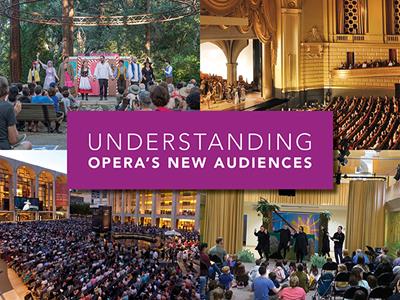
Understanding Opera’s New Audiences: Research Report
Read the report of a national research study into the motivations, experiences, and barriers faced by new opera audiences nationwide.
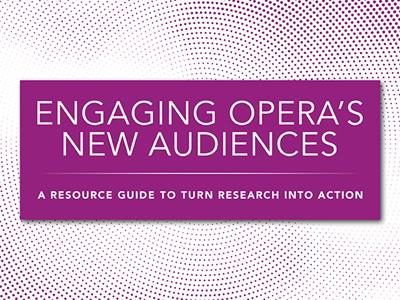
Engaging Opera's New Audiences: Turning Research into Action
Read the companion resource guide to turn first-time operagoers into loyal fans with insights and tactics from OPERA America.
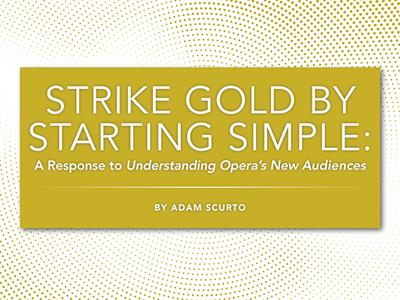
Strike Gold by Starting Simple: A Response to Understanding Opera’s New Audiences
A response to OPERA America’s audience report exploring how to mine research for actionable takeaways.

Meet Them Where They Are: A Response to Understanding Opera’s New Audiences
Katherine Powers shares how she derives meaning from OPERA America’s newcomer study for her work at Pacific Opera Project

Christina Post
As Director of Marketing & Communications at Portland Opera, Christina's goal is to use the magic of Marketing to bring the joy of Portland Opera to the region she loves.

